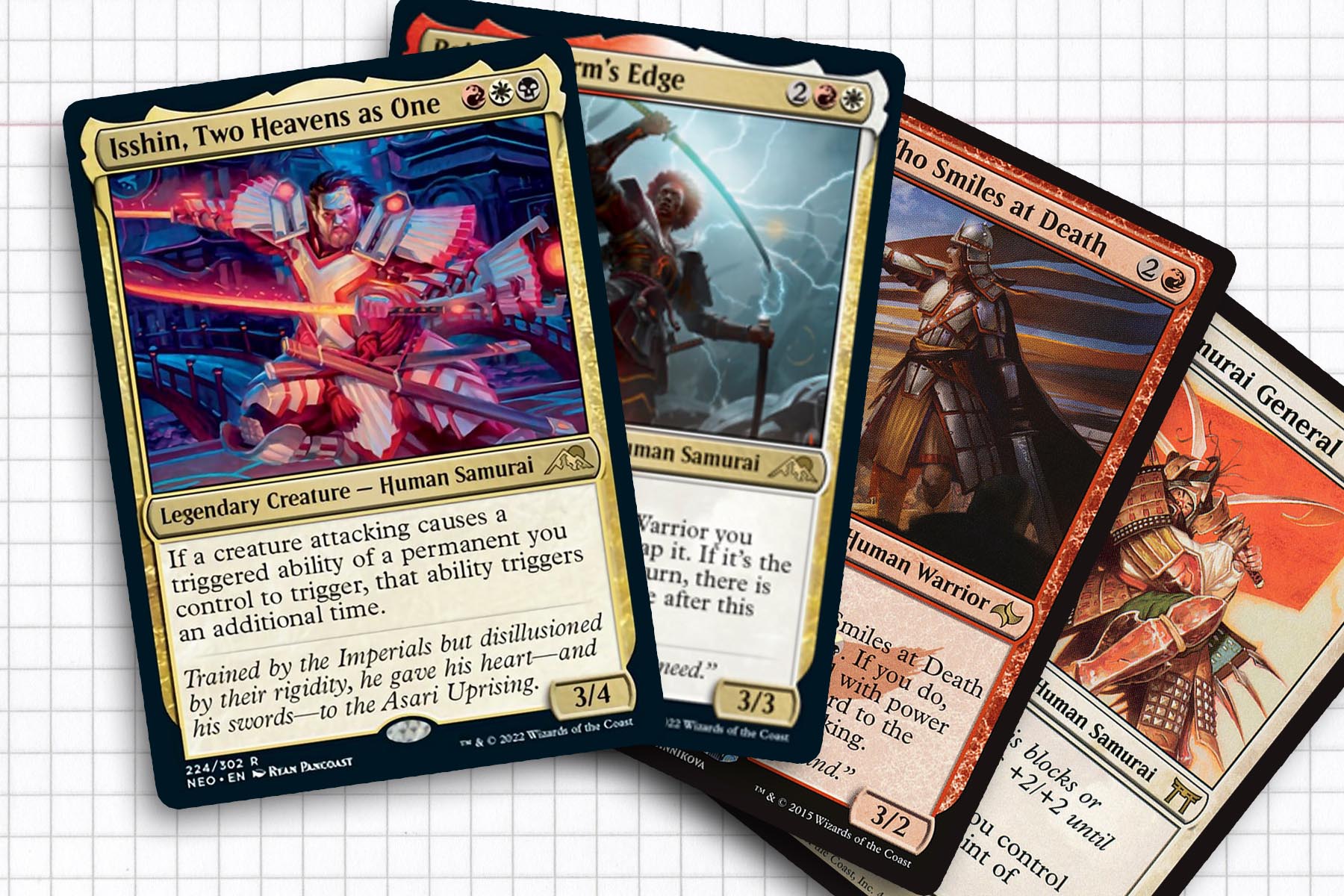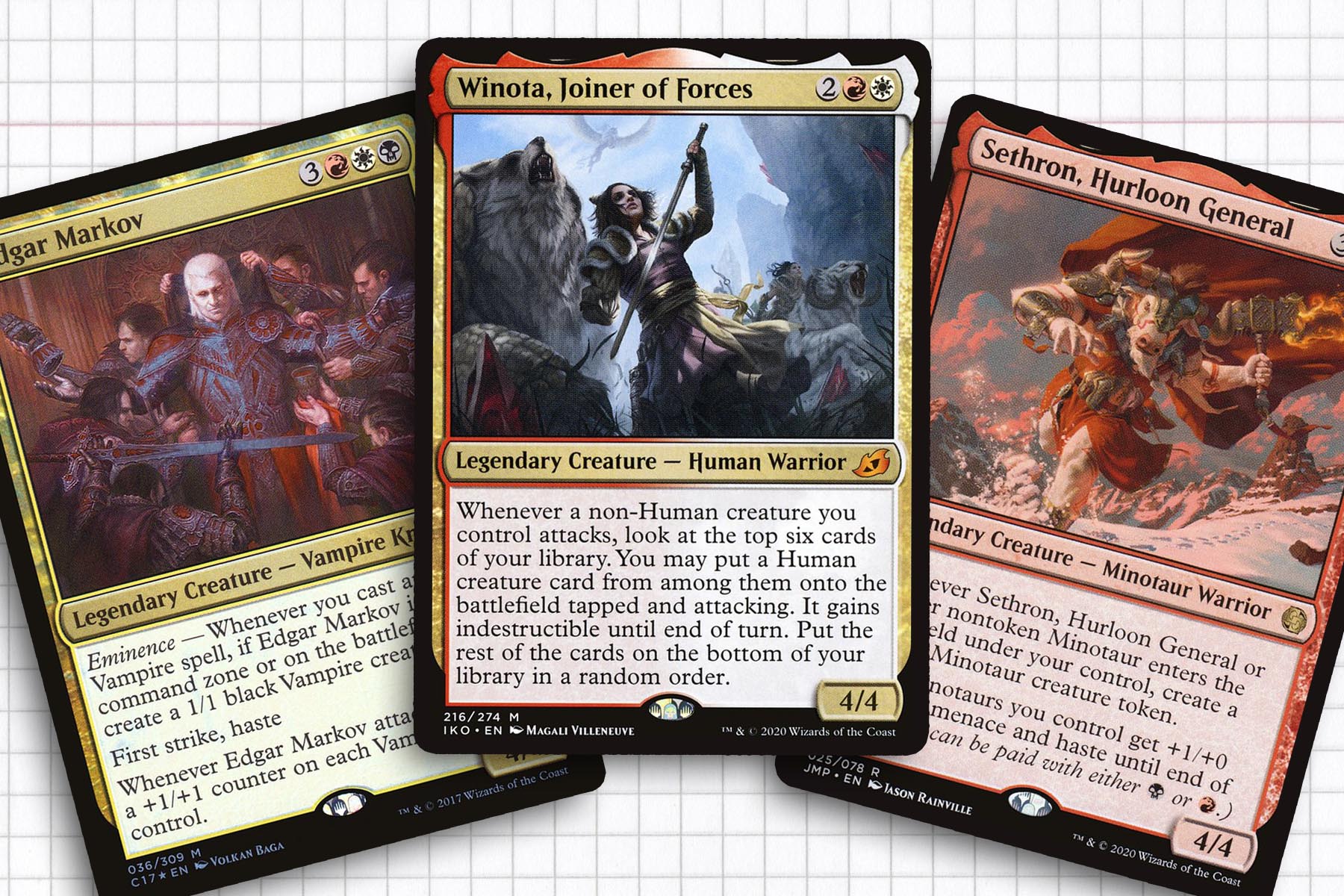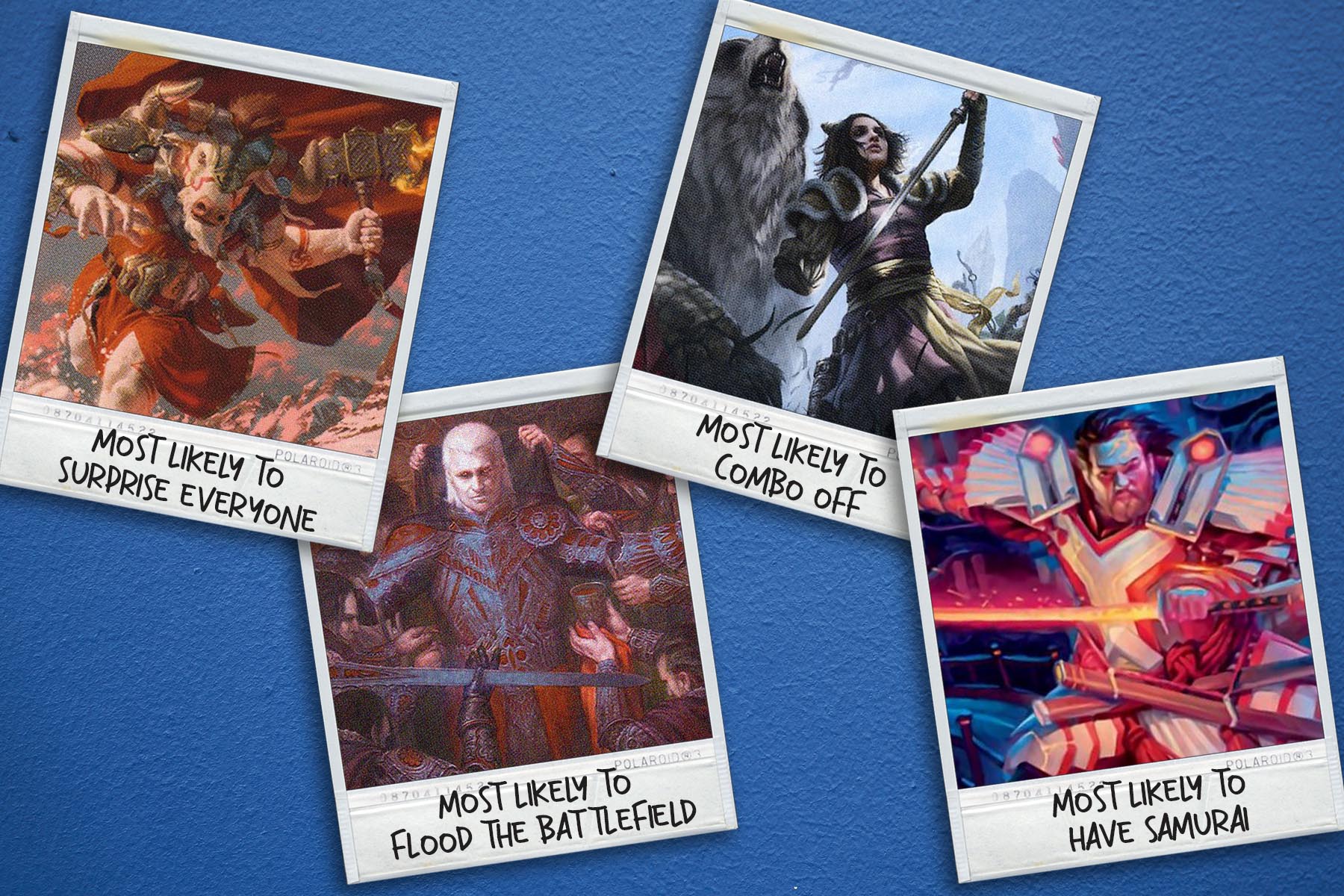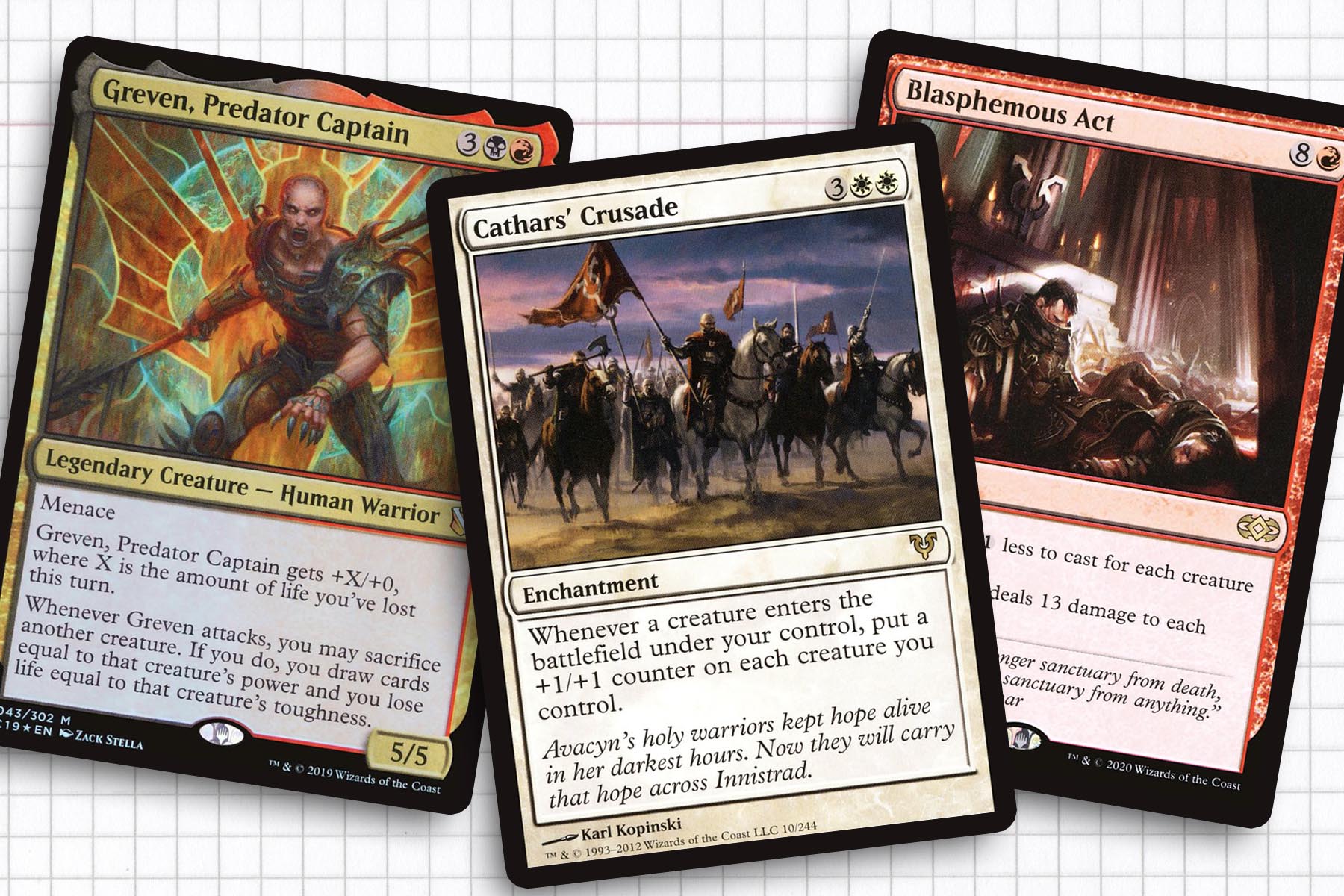Threat assessment is a variable present in every game of Magic. Each player subconsciously observes who at the table is dangerous or most likely to win, and everyone is guilty of being the Monday morning quarterback after the game. In Commander, I find it to be one of the cornerstones of the strategy and politics inherent in every game that happens at the table. It’s an art form that I believe you can learn a lot of lessons from, but that you need to remain humble about.
I used to be horrible at threat assessment and internally critical of the assessment on display from my opponents. But from the seeds planted by my previous articles about defying expectations and how being good at Commander might make you a decent Survivor player, some self reflection on the last few years of my understanding of the format came to light.
My most important lesson is that you should never be actively critical of a player’s choices in the moment. There is always room for sarcasm and playfulness, but it is not helpful to become irritated when Player A Mana Drains your spell that was intended to take out Player B. Short of Telepathy being in play, you do not know the context of other players’ hands, and it’s nigh impossible to know what is motivating every player at the table and what value they place on the other players remaining in the game over you.
This week, I intend to look at some best practices for how to monitor threat assessment, manage your own threat level, and evaluate the threat level of other players at the table. I will be looking at these concepts through the lens of one of my recent decks, samurai tribal led by Isshin, Two Heavens as One. The deck has proven to be good at mitigating a high threat level and stringing together the tools to swing games in my favor on more than one occasion.
Commander: Isshin, Two Heavens as One
Creatures: Adriana, Captain of the Guard, Akki Battle Squad, Akki Ronin, Alesha, Who Smiles at Death, Asari Captain, Avenging Huntbonder, Blade Historian, Devoted Retainer, Doomed Necromancer, Fumiko the Lowblood, Garna, the Bloodflame, Godo, Bandit Warlord, Goro-Goro, Disciple of Ryusei, Greven, Predator Captain, Heiko Yamazaki, the General, Ironsoul Enforcer, Kentaro, the Smiling Cat, Komainu Battle Armor, Konda, Lord of Eiganjo, Metallic Mimic, Morbid Opportunist, Nagao, Bound by Honor, Nezumi Bladeblesser, Norika Yamazaki, the Poet, Peerless Samurai, Pilgrim’s Eye, Raiyuu, Storm’s Edge, Reinforced Ronin, Ronin Cliffrider, Ronin Houndmaster, Selfless Samurai, Sensei Golden-Tail, Sunblade Samurai, Takeno, Samurai General
Artifacts: Arcane Signet, Archaeomancer’s Map, Dispeller’s Capsule, Dreamstone Hedron, Hammer of Nazahn, Herald’s Horn, Konda’s Banner, Metalspinner’s Puzzleknot, Oathkeeper, Takeno’s Daisho, Sword of the Animist, Tenza, Godo’s Maul, Wayfarer’s Bauble, Whip of Erebos
Enchantments: Borrowed Time, Cathars’ Crusade, Citadel Siege, Day of Destiny, Felidar Retreat, Search the Premises
Planeswalkers: Nahiri, the Harbinger, The Wandering Emperor
Instants: Call to Glory, Scout’s Warning
Sorceries: Akroma’s Vengeance, Blasphemous Act, Culling Sun, Eiganjo Uprising, Primevals’ Glorious Rebirth, Unbreakable Bond
Lands: 5 Mountain, 7 Plains, 4 Swamp, Clifftop Retreat, Command Tower, Dragonskull Summit, Foreboding Ruins, Furycalm Snarl, Ghost Quarter, Haunted Ridge, Isolated Chapel, Nomad Outpost, Savai Triome, Secluded Courtyard, Shattered Sanctum, Shineshadow Snarl, Shinka, the Bloodsoaked Keep, Slayers’ Stronghold, Sundown Pass, Tectonic Edge, Temple of Malice, Temple of Silence, Temple of Triumph

Chivalry in Combat
There was no question that some form of this deck was going to be built pretty quickly after Kamigawa: Neon Dynasty. I have had a well-documented love affair with samurai that dates back even before I started writing for Hipsters of the Coast. I had been bouncing between Boros and Mardu for some time, most recently landing on Queen Marchesa. Trying to discern if the right general was going to be Isshin, Two Heavens as One or Raiyuu, Storm’s Edge took some deliberation. Both push in a similar direction, but now that the card pool had grown, I had to weigh how important the Black piece of the color pie was going to be for my vision of the deck.
Samurai were given some expanded identity by adding combat-focused triggers and crossover with the warrior tribe. Ultimately, this inclusion of warriors was the deciding factor in the desired color identity for the deck, with an additional upside being the opportunity to substitute non-creature spells like Breath of Life and Resurrection for on-theme creatures like Alesha, Who Smiles at Death and Garna, the Bloodflame. In the end, the exalted style samurai/warrior crossovers and reanimation opportunities have proven to be critical pieces on multiple occasions.

My Game Night with Alex
About a month ago, I found myself in some Commander games against three of my friends: Charlie piloting Sethron, Hurloon General, Nate playing Edgar Markov, and Alex with Winota, Joiner of Forces. For all of the valid concerns about Edgar, a mainstay of Nate’s rotation, I know that Alex is always a threat: he’s smart, does not often overcommit, and builds decks that rebound after Wrath-effects very efficiently.
Equipped with Winota, I knew before even looking at my opening hand that I would need to watch Alex closely. Edgar could get out of hand if we didn’t keep Nate honest, and Sethron might be a meme deck, but also capable of taking the table off guard with a well timed Deathbellow War Cry.
Unfortunately, I was the only player who really concerned themselves with Alex’s threat level. Several times over the course of the game, I found myself being attacked instead of applying pressure to Alex. While it might bring me displeasure, I get it. Due to factors ranging from more favorable trades in combat, me having a higher life total, or just not understanding what Winota is capable of yet, all I could do was shrug as Combat Celebrant and Rionya, Fire Dancer soon comboed off. Once this was demonstrated, shuffling up for a second game with the same decks happened pretty quickly.

The Theory of Assessment
In truth, threat assessment proves to be a series of small decisions that need to be made in the moment in the hopes of bettering your place within the game. While not as clear cut as asking “who’s the beatdown?” staying knowledgeable about the momentum and tempo of the game is going to do you a lot of good. Sometimes this is reflected in an opening hand that has a key card and in other situations, knowing that the right land count and draw spells will be enough that you can react to whatever may come of a game.
It’s obviously important to monitor your own threat level: knowing when is it right to go full steam out the gate versus the right time to pull your punches and wait for someone else to expose their Achilles’s heel. But it’s also equally important to be ready to assess moment by moment what is threatening to your game.
During the first game, I knew my priorities on turn one, fully expecting that they would change from moment to moment. Sethron, Hurloon General is not as concerning as Winota, but Moraug, Fury of Akoum could very well change that assessment and suddenly Borrowed Time has a different target. Similarly, Edgar getting to six mana and being able to cast Farewell or Merciless Eviction means that the reanimation my deck is capable of is cut off. Once that option is available, practicing empathy and monitoring the board from Edgar’s perspective becomes equally important. If all creatures get exiled, does that cut off any of their strategy or are they immune, because Eminence just invalidates everything else?
A lesson I’ve also taken from Alex in the past is that he will let other people do his dirty work. Even if he has the Abrade and mana to cast it, he’ll put the onus on everyone else to deal with something that might stand to lessen his position, simply because it might equally be standing in their way as well. The key, I’ve learned, is to let those puppet strings get pulled and call back to them later, raising Alex’s profile through distraction.

Never Be The Threat, Until You Are
Isshin, Two Heavens as One is already playing into the fact that nobody should legitimately be afraid of what the samurai deck is capable of. In our second game, my opening hand had Blasphemous Act and I knew immediately that was likely my best line of play; finding the right moment to deploy it might be my path to victory. All I needed was the rest of the table to attrition some life and give me an opening.
Early on, I found myself with a board state that included Peerless Samurai equipped with Oathkeeper, Takeno’s Daisho and Raiyuu, Storm’s Edge. This basic setup allowed me to make meaningful attacks a few turns in a row while also having the option of pseudo vigilance and some resiliency to removal. In my mind, this was applying pressure and keeping pace with the rest of the table, but I never got the feeling that people were disproportionately threatened by me. More importantly, it left me not appearing as the most vulnerable player at the table.
This game also had the distinction of having a higher saturation of wrath effects than I have seen in quite some time. The momentum of the game kept getting interrupted, overcommitting was punished, and we each had to rebuild more than a few times. Surprisingly, I think Edgar Markov got hurt the most by this and I believe was the first player out of the game.
Eventually I drew Garna, the Bloodflame and realized that the best course of action would be to let the board fill up one last time, allowing Blasphemous Act to cost a single red mana, and then casting Garna afterward. While everyone else would be rebuilding, I would start my next turn with the best seven cards between my hand and the newly filled graveyard. From there, the only threat to me would be any player who could remove my creatures at instant speed.
This ultimately paid off, as I was able to get Blade Historian into play immediately after Garna came down. Then on my next turn, I played Cathars’ Crusade and Alesha, Who Smiles at Death, allowing me to put the pressure on the remaining players and walk away with a win. Once again, keeping a low profile until I needed to take command of the game.
Closing Thoughts
I very much believe that threat assessment can be a complex web of interactions. But the older and more empathetic I get, the easier it is for me to understand my motivations and the motivations of the other players at the table. This can help, as it allows you to understand what is most threatening to you but also what other players might find threatening. This understanding can help you to navigate the game and hopefully come out on top.
Obviously, my old standby is to use the manipulation of expectations to allow myself to float under the radar and buy myself the crucial extra turns I need to properly assess what is the most advantageous move for me, but it’s always important to understand what is advantageous to everyone else as well. Once you unlock that skill, you can become a better Commander strategist. Thanks for reading.
Ryan Sainio is a Graphic Designer who writes about EDH and the EDH community. He has been playing Magic: the Gathering since 7th Edition in 2002 and values flavorful and fun gameplay over competitively optimized decks.

